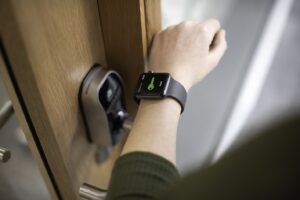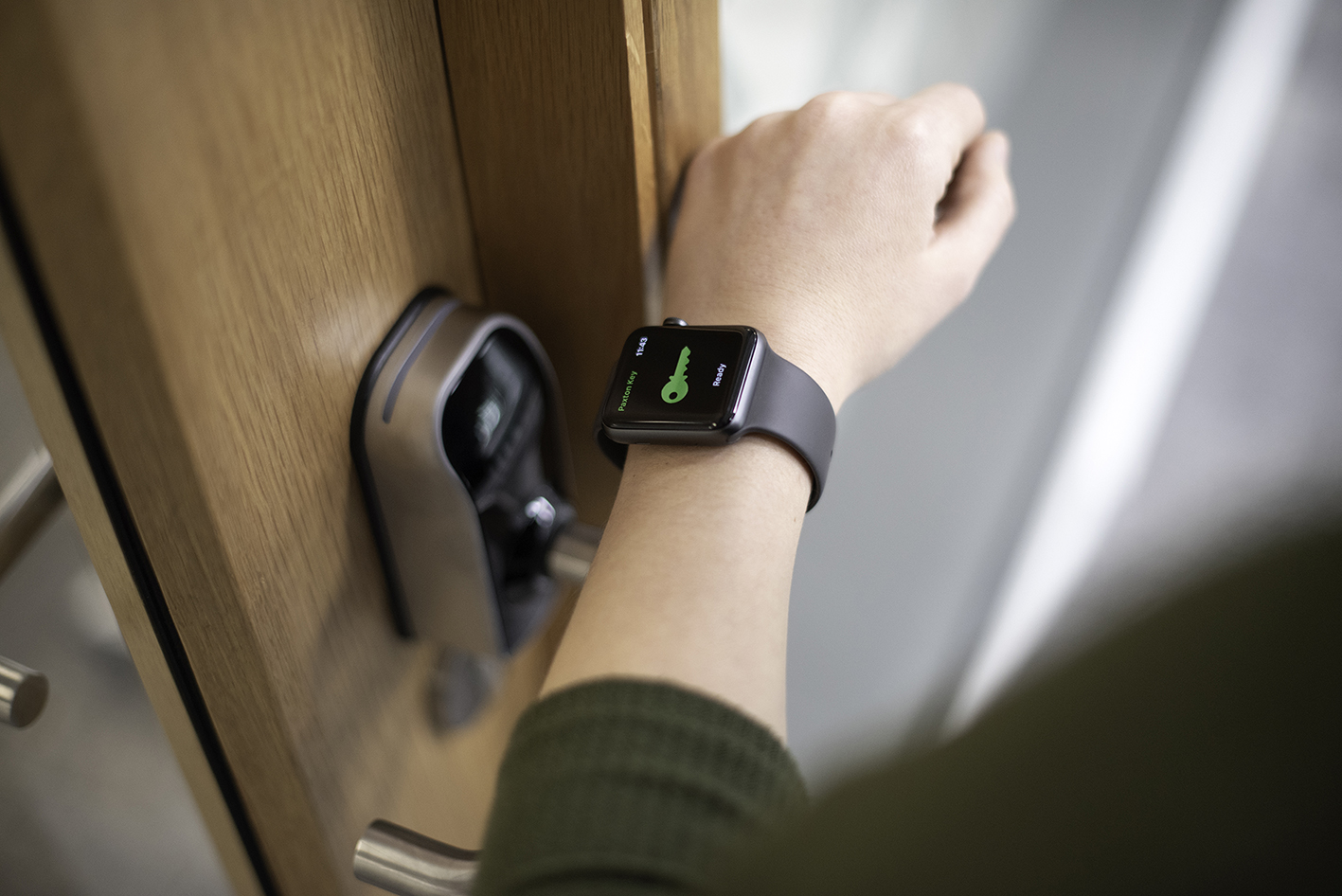Things to consider when buying an access control system
Stop!
When considering restriction to an area you are basically saying stop to whoever wants to gain access. Its an important consideration to consider as you may not want to alienate customers. For example, covering an external reception door will make the person wait if they need to gain access, are they going to be stood in the pouring rain, could you instead cover an inner door?
Come In!
Once the decision is made to cover a door, what technology are you going to employ to allow people to come through or to alert you that they want to come through? There are many choices and combination of choices: –
- Intercom (audio or audio & video)
- Keypad
- Card Reader
- Smart Device (Phone or Watch)
- Biometrics (fingerprint, palm print or facial recognition)
With the recent Covid-19 Pandemic the use of keypads, magnetic stripe cards and finger print readers is being shied away from due to the potential transmission of disease through touching these devices. Proximity readers or Smart Devices are more common as they don’t need contact.
Who’s In!
So you have put your access control on a door and someone has legitimately used the door to gain access to the restricted area. Do you need to know they are in there? Do you need to know if they leave? If the answer to either of those is yes, then you need a computerised access control system (like Paxton Net2 or Paxton10). Standalone access control solutions are great and lower cost but will not provide reporting functionality.
Who’s allowed where and when?
To date we have only considered one door. If your need dictates you want control over multiple doors and areas, then going along the standalone system on each door could become a logistical and management nightmare. For example, everyone needs to get in the front door, sales and staff through the office door, production staff through the office door, Directors into the Board Room, IT Department into the server room. Keeping track of even 30 users across those doors with that level of control would be complicated on standalone readers, even before someone reports their card lost or stolen. A computerised system would be simple and easy to program for this level of access.
On a computerised system you can also program cards for times they are allowed in the building, for example a company might want sales and administration staff to access between 8am and 6pm but others to access 24 hours.
You can leave now!
As equally important to controlling entry is ensuring that leaving is a simplistic process, consider how many people may be leaving a door at one time. Does the person need to log out using a reader so that you are aware they are offsite? How do you stop them tailgating someone else leaving? This can be achieved on a computerised system by introducing anti-pass back. This means someone who hasn’t logged out cant use their card to come back in. Also remember if you have taken steps to limit contact and potential spread of disease on the outside, do not put a button on the inside you need to touch.
Added Benefits!
What else do you need out of your system, there are lots of additional benefits associated with access control however, here are some of them to consider
- Company ID Cards with photos that double up as access cards
- Number Plate recognition that can lift a barrier to the Car Park
- Time and Attendance
- Visitor Sign In
- Occupancy Indication
- Fire Alarm Roll Call



